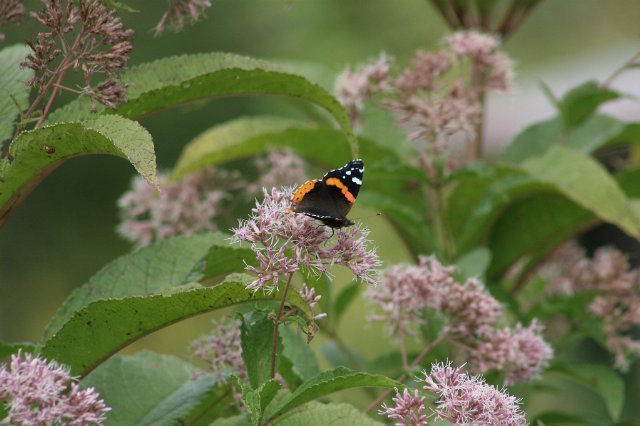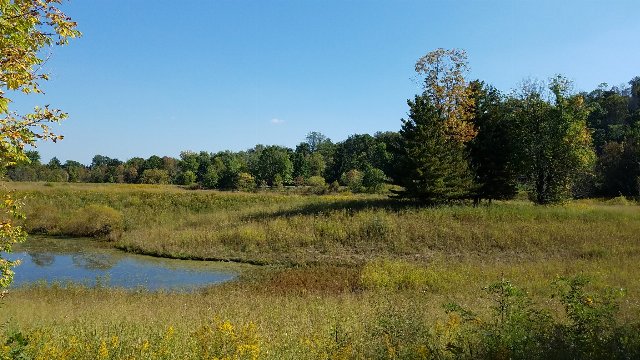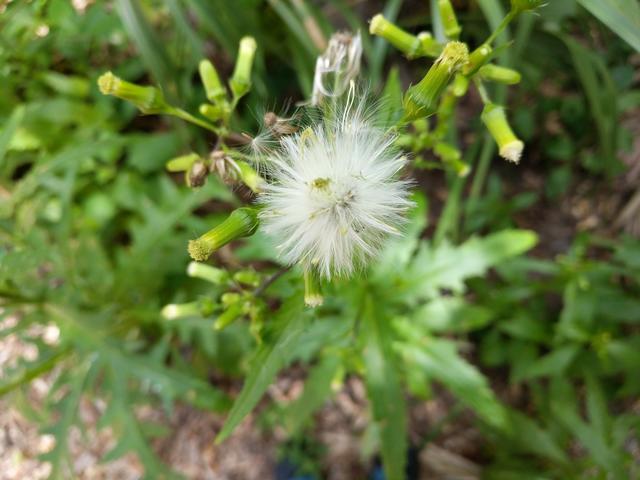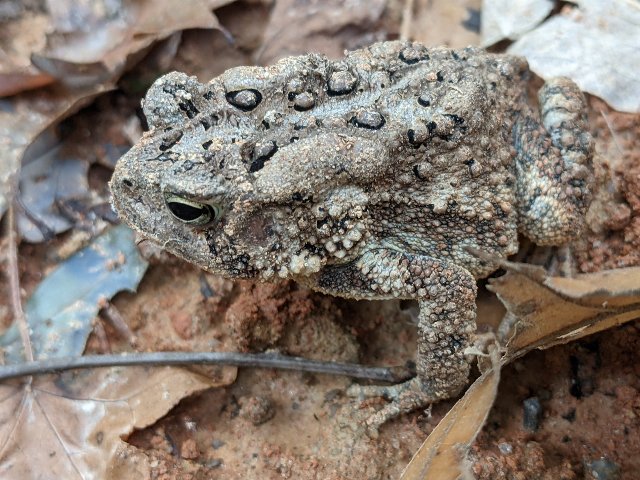The Vision for bplant.org
December 9th, 2021 by Alex Zorach
I started bplant.org both because I have big goals and dreams, and because I believe I have a realistic plan for bringing those dreams into being. However, I need to enlist the help of many others in order to achieve these dreams. This post outlines the driving purpose behind bplant.org, including both what the goals are and how I plan to get there, and it concludes with what you can do to help us get there.Our Vision for the World
It is an unfortunate reality that humans today are adversely affecting the environment and endangering biodiversity. Loss of high-quality, wild habitats, combined with pollution and other environmental problems, are leading to an unprecedented loss of species. In most cases, we are replacing diverse wild habitats with low-biodiversity areas, such as agricultural monocultures, paved surfaces, or manicured suburban lawns.The resources that we humans expend interacting with plants, resources that could be used to protect, preserve, and restore biodiversity, in practice are often not, and instead are even doing harm. Commercial nurseries propagate, grow, and sell plants which are then transported and planted by gardeners, landscapers, and property owners. People expend money, time, and other material resources such as fuel in the process of planting, caring for, and pruning and mowing plants. But often, nurseries are propagating, growing, and selling non-native plants, some of which become invasive, many of which are poor at supporting insects and the food web, and none of which do anything to support the locally-native flora. And at times, people unnecessarily clear areas of high biodiversity and replace them with sterile landscaping.
In our vision for the world, these resources would be directed to have a positive effect on our ecosystems. Nurseries could collect seed from local plant populations, preserving local varieties and breeding more vigorous versions of locally-threatened plants, and then selling them locally to gardeners and conservationists alike. And as gardeners and landscapers, whether professionals, hobbyists, or property owners, bought and planted these plants, the seeds would spread back out into wild ecosystems, strengthening the local plant populations. Both on people's property, and in the wild, these species would then support insects and other animals. Such efforts could even preserve and restore endangered or locally-extirpated species.
 Locally-native plants like this spotted joe pye weed (Eutrochium maculatum) in Indiana tend to be better at supporting the food web than introduced plants. Not only are the flowers attractive to pollinators, but the plant is also eaten by insects. This species has wind-dispersed seeds, and can thus easily spread out of gardens into the wild. Photo © Indiana Ivy Nature Photography (Flickr), CC BY 2.0, Source.
Locally-native plants like this spotted joe pye weed (Eutrochium maculatum) in Indiana tend to be better at supporting the food web than introduced plants. Not only are the flowers attractive to pollinators, but the plant is also eaten by insects. This species has wind-dispersed seeds, and can thus easily spread out of gardens into the wild. Photo © Indiana Ivy Nature Photography (Flickr), CC BY 2.0, Source.In addition, a lot of resources would be freed up by virtue of people making better choices about which plants to plant. Pruning needs would be minimized by people choosing plants whose maximum sizes were appropriate to the site. Replacement needs for dead trees, shrubs, or perennials, would be minimal because people would pick species adapted to the conditions of each site. People would know the value of large dead wood, dead plant stems, and leaf litter, and would leave these things in place when safe to do so, instead of expending unnecessary energy to remove these things from the environment (and thus expending money in a way that reduces biodiversity.)
People would not mindlessly kill volunteer plant seedlings that come up in unexpected places. They would remove invasive plants or other unwanted plants, but identify valuable native plant seedlings and move them to more desirable spots, share them with others, or possibly even sell them.
And perhaps most importantly, people would recognize the value of plant bidiversity: they would see lush, diverse growth of plants, wild areas and semi-wild components of landscaping as beautiful. There would be no battles with homeowners associations (HOA's) or municipal governments; rather the HOA's and municipal governments would be populated by ecologically-minded people who were spearheading conservation efforts and educating homeowners. People would no longer see biodiversity and ecologically-sound landscaping as at odds with the goal of increasing property values, but rather, as essential for maintaining property values.
Much of the energy people currently spend struggling and fighting against each other and against the environment would be freed up. The massive savings of money, person-hours, and other resources, could be put towards preserving and protecting biodiversity. Resources currently expended pruning trees and shrubs too big for a site, or mowing or clearing areas that don't need to be cleared, could instead be put towards removing invasive species. Resources currently put towards planting non-native (and some soon-to-become-invasive) plants could instead be put towards site-suitable native plantings that would have a restorative effect on the ecosystems.
We could "have our cake and eat it too", enjoying a higher quality of life, for lower cost, and having a positive impact on the environment rather than a negative one.
Economic Benefits as Well
Plants provide real value, even cash value, and even outside of an agricultural setting. Trees reduce wind speed and moderate temperature, reducing heating and cooling bills, and also making it more pleasant for people to spend time outdoors. Plants produce food and other useful products. Dense plant growth can slow runoff and increase soil permeability, reducing the risk and severity of damaging (and costly) floods. Plants store water, increase infiltration of water to the water table, and can buffer against drought and aid replenishment of aquifers. Wetland vegetation filters water and improves water quality downstream, which protects waterways and even commercial fisheries. And the improvement of air and water quality that comes with healthier ecosystems benefits us all. Vegetation, especially wetlands and forests along riparian corridors, plays a critical role in cleaning water and air, and reducing the risk of flooding, and stabilizing the water table and protecting against drought. Humans benefit from all of these ecosystem services. Photo © Dan Keck, Public Domain, Source.
Vegetation, especially wetlands and forests along riparian corridors, plays a critical role in cleaning water and air, and reducing the risk of flooding, and stabilizing the water table and protecting against drought. Humans benefit from all of these ecosystem services. Photo © Dan Keck, Public Domain, Source.Just as the burning of fossil fuels is an economic "dead-end" that generates value only once while also causing harmful externalities like pollution, many of the above examples of waste related to the misguided planting or maintenance of plants, are similarly economic dead-ends. A plant unsuited to the site that needs to be repeatedly pruned, a plant that dies and needs to be replaced, any area that is unnecessarily mowed or cleared, any log unnecessarily mulched, any flower bed over-mulched, represents wasted resources that create no real value for society. Such cases often destroy value and create negative externalities.
When we move away from such dead-end expenditures, towards ones that create more value, in the long-run, we create more business opportunities and more jobs as well. Realizing our vision involves many highly-skilled jobs in which people could be self-actualizing, feeling a deep sense of purpose and meaning, earning money while making the world a better place.
How bplant.org Can Help Us Achieve This Vision
The challenge of getting from where we are now to the idealistic vision of where we want to be is ultimately met by information and education. There is one reason common to all of the environmentally harmful, "dead-end" behaviors described above: people do all of these things because they don't know better. The solution is education, which bplant.org addresses from multiple angles: as a reference, and through direct advocacy through articles, and through our activity on social media. As the site develops we also plan to advance these goals through interactive features that facilitate such learning.There are already numerous educational resources, native plant advocates, and environmental organizations out there. But, to see that these resources are not enough, that something more is needed, we only need to look at the world around us. Our vision is not yet realized, so something additional must be necessary.
 Weedy plants without showy flowers, like American burnweed (Erechtites hieraciifolius) can be just as important for the ecosystem as ones that satisfy conventional human aesthetic senses. Photo © Michael Kummer, Public Domain, Source.
Weedy plants without showy flowers, like American burnweed (Erechtites hieraciifolius) can be just as important for the ecosystem as ones that satisfy conventional human aesthetic senses. Photo © Michael Kummer, Public Domain, Source.I think bplant.org not only can, but already does offer something that goes beyond existing resources out there. Much of what I have already created addresses unmet needs that I myself had when I first started researching plants online years ago. Some of our key innovations include the ecological focus to our articles, our ecoregion-based range maps, our side-by-side comparison/ID guides, and at times, the simple fact that we are among the most vocal parties who are talking about certain issues that need to be talked about, such as the need for preserving the local population genetics, or the need to protect "weedy" or conventionally "non-aesthetic" plants.
Another major undertaking is to take already public information and repackage it into a more accessible form. For example, our ecoregion maps and articles take material published by the US EPA, CEC, and other organizations, that assumes extensive background in geology and/or forestry, and make it accessible to a more general audience. Our plant ID guides also take information from dichotomous keys and more technical flora manuals, and make it accessible to people with less knowledge of botanical terminology.
We need staff to fully realize our vision.
My long-term vision for bplant.org is as an organization with a staff, that can not only maintain the site, but continually improve it. If you like what you have been seeing, keep in mind that this is what I have been able to accomplish without even working on the site full-time. More funding would facilitate some obvious results, including:- Completion of all ecoregion articles - This goal is one of the most quickly attainable; just over 30% of these articles are complete.
- Completion and improvement of range maps - Although we have made huge strides in our ecoregion-based range maps, a lot of work remains. The data underlying these maps also will serve as a foundation for plant lists, a feature we plan on launching in early 2022, allowing users to generate lists of plants native to their particular ecoregion.
- Completion of articles on important plant species - And also completion of more esoteric species as well.
- Creation of more ID guides - There are still countless ID guides for which there is strong demand, which we have yet to create.
- Adding of more images to articles and guides - Although nearly all completed plant articles have many images, there is always room for adding more illustrative photographs. Many of our completed ecoregion articles still lack images entirely.
- Better publicity - bplant.org's ultimate goal is to preserve and protect plant biodiversity through information and education. We will be better able to do this if we are able to better share and publicize our resources. Our blog posts and posts on social media already get a high amount of engagement, but posting on social media is time-consuming, as is writing, and time I spend on social media can take away from my work on the rest of the site.
- Refining ecoregion data - Beyond the obvious next-step of making our range maps accurate to level 4 ecoregions, in the long-run I would like to revisit the GIS data itself. In the course of our work we have already encountered numerous problems and limitations with the ecoregion data provided by the CEC and US EPA, such as instances where the borders correspond poorly to geologic maps and aerial photos. Also, for the purposes of plant range maps, the level of detail in some level 4 ecoregions in insufficient, mainly for regions that span long distances. We would like to add another level of detail in order to build as accurate as possible range maps.
- New interactive features you may not have even imagined - Perhaps tools to allow nurseries to list particular locally-sourced plants they are selling, or land management tools that could allow property owners to display information about opportunities for volunteers to help with invasive plant control or native plant reseeding efforts. Perhaps plant lists that can be filtered and sorted by attributes such as plants' habitat requirements, life cycle, height, or other characteristics.
Financing Our Vision
We will need money to realize our vision. I want to keep as much information freely accessible as possible, and I want to avoid distracting advertisements so as to maximize the reach of the information and the usability of the site.I have been working on bplant.org for over three years with only minimal compensation, supporting myself through other income sources. I am now turning to a fundraising drive to realize this vision, and I ideally want it to be as quick and effective as possible so I can turn my attention back to working on the project.
Our Fundraising Goals
I have set a three-tiered goal for fundraising, including short-term, medium-term, and long-term goals. The short-term goal is to raise $5,000 by year's end, 2021. The medium-term goal is an annual budget of $70,000, which I would like to meet as soon as possible. This figure would allow me to work on the project full-time with a reasonable salary, cover all the site's expenses even if hosting needs increase, and have some discretionary spending left over.A longer-term goal is an annual budget of $300,000; this would allow us to hire multiple full-time people to expand the offerings of the site. Our ideal fundraising scenario would be to meet the $70k annual budget goal quickly, but take longer to reach this larger, more ambitious goal so that we can have time to scale up our organization effectively. If we exceeded our $70k goal before we had time to create the structure to hire employees, we would donate more to related organizations, and set aside some money to create an endowment to generate investment income so that the organization would not be as dependent on direct donations in the long-run.
These amounts may seem large, but they are small relative to the budgets of many organizations, and they are also small relative to the savings and indirect economic gains for society as a whole resulting from this project. Donating to this project thus represents an efficient use of money.
How You Can Give
We have been accepting recurring donations anonymously through Liberapay for nearly two years now. This system will remain in place for donors who wish to remain anonymous. But we have recently set up a system to accept donations directly through our own site, using Stripe as a payment processor. You can reach our new donation page through the Donate link in the header (top right) of our site, or on the footer of any page where it reads Donate Directly. Besides being a bit simpler, our new system also accepts one-time payments, if you do not wish to sign up for a recurring donation. You can also contact us about other ways of giving.If you have any further questions, you can consult our Support FAQ, and if there is any question you do not see adequately addressed there, please contact us.
Unable to help financially? There are other ways you can help us, even with financial goals.
 This toad, who lives in Goochland County, VA, in the Northern Outer Piedmont, lacks the financial means to donate to our site, but is helping us by showing its beautiful face on this blog post. Photo © stephen, CC BY 4.0, Source.
This toad, who lives in Goochland County, VA, in the Northern Outer Piedmont, lacks the financial means to donate to our site, but is helping us by showing its beautiful face on this blog post. Photo © stephen, CC BY 4.0, Source.If you don't have the means to donate currently, you can still help us reach our goals:
- Talk to others who may be able to donate - Do you have any friends or family who care about protecting biodiversity, and who are in a better financial situation than yourself? You could recommend for them to give, or even ask them to give a donation on your behalf. Asking for such donations as a present is a great way to avoid unwanted material gifts during the holidays, thus protecting the environment in two ways at once!
- Share this blog post and/or links to our donate page - It can help us a lot. It's no secret that fundraising posts often attract less engagement on social media than is typical; by engaging with these posts you can help them to reach a broader audience, and you can also add commentary about why you think our project is worth supporting.
- Give us feedback on our site and donation system - Did you catch a typo, error, or glitch? Something that is unclear? Do you have an image that could illustrate a concept on one of our pages that is lacking a relevant image? Get in touch with us!
- Use our site and share our other material - Whether or not you are able to help us directly with our financial goals, we want our material to get out there to the world. In the long-run, helping us with our other goals will help our fundrasing.
Watch Our Progress Towards Our Goals
If you visit the donate page, besides being able to chip in, you can also see our progress towards our goals. Currently the only goal displayed is our short-term goal, but as this is met, we will display our next goal.If you've read this far, thank you so much for your time! And I sincerely hope that you can join us in this shared vision.
Archive of All Blogs
The Bias Against Tall Plants, November 11th, 2025
A Focus on Goldenrods (Solidago sp.), July 23rd, 2025
Disturbance and its Role in Plant Habitat Preferences, May 29th, 2025
What "Native" or "Introduced" Mean: Myths and Misconceptions, March 11th, 2025
Smarter & More Informative Search Results, January 13th, 2025
The Effect of the 2024 US Election on Plant Biodiversity and bplant.org, October 30th, 2024
The Problems With Nursery-Bought Plants, And The Solutions, October 8th, 2024
More Databases Linked & Search Improvements for Scientific Names, July 9th, 2024
Choosing The Best Common Names For Plants: Challenges & Solutions, April 19th, 2024
Range Map & Taxonomic Update Progress, January 31st, 2024
Giving Thanks To Everyone We Rely On, November 22nd, 2023
Thinking More Deeply About Habitat, April 5th, 2023
2022 Year-End Summary: Successes & New Goals, February 15th, 2023
New Databases Linked: Flora of North America & NatureServe Explorer, November 11th, 2022
All Range Maps 2nd Generation, Taxonomic Updates, & Fundraising Goal Met!, September 29th, 2022
More Range Map Improvements, POWO Interlinking, And Notes Fields, June 7th, 2022
Ecoregion-Based Plant Lists and Search, March 30th, 2022
Progress Updates on Range Maps and More, February 10th, 2022
The Vision for bplant.org, December 9th, 2021
New Server: Software & Hardware, August 30th, 2021
More & Improved Plant Range Maps, July 19th, 2021
A Control Section for Invasive Plants, April 15th, 2021
Progress Bars & State Ecoregion Legends, March 11th, 2021
Our 2020 Achievements, February 9th, 2021
Interlinking Databases for Plant Research, November 11th, 2020
A New Homepage, Highlighting Our Articles, July 29th, 2020
A False Recovery, But North Carolina's Ecoregions are Complete!, June 9th, 2020
We're Back After COVID-19 Setbacks, April 3rd, 2020
Help Us Find Ecoregion Photos, February 27th, 2020
What We Achieved in 2019, December 30th, 2019
Plant Comparison and ID Guides, October 30th, 2019
We Are Now Accepting Donations, October 14th, 2019
US State Ecoregion Maps, New Footer, Ecoregion Article Progress, and References, September 19th, 2019
Tentative Range Maps of Native Plants, August 12th, 2019
Ecoregion Locator and Interactive Maps, July 10th, 2019
Using Ecoregions Over Political Boundaries, May 13th, 2019
How We Handle Wild vs Cultivated Plants, April 16th, 2019
A Blog To Keep People Updated On Our Progress, April 8th, 2019
Sign Up
Want to get notified of our progress? Sign up for the bplant.org interest list!


